Tamron 28-300mm f/3.5-6.3 Di VC PZD Review

Introduction
The Tamron 28-300mm f/3.5-6.3 Di VC PZD is a wide-angle to telephoto zoom lens designed for 35mm full-frame sensor DSLRs. Boasting a new splash-proof design and features such as a Piezo Drive focusing motor, VC (Vibration Compensation) technology to combat motion blur, moisture resistant construction and a 49cm minimum focus distance and a maximum reproduction ratio of 1:3.5, the Tamron 28-300mm f/3.5-6.3 Di VC PZD costs around £619 / $849 and is available in Canon, Nikon and Sony fit. The Sony model comes without the VC image stabiliser because Sony cameras already have it built into the camera body.
Ease of Use
The Tamron 28-300mm f/3.5-6.3 Di VC PZD is quite light considering the 10.7x zoom range on offer, weighing in at 540g. It certainly doesn't feel too weighty in the hand and proved to be well balanced on the Canon EOS 5D Mark III that we tested it with. The lens does extend by about an extra 8cm when fully zoomed out to 300mm, where it starts to look a little incongruous even on a large DSLR like the 5D Mark III.
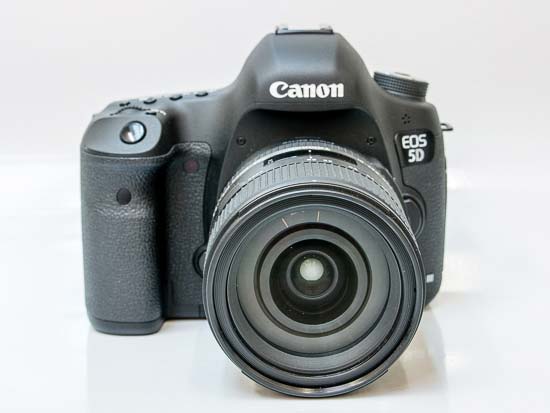 The Tamron 28-300mm f/3.5-6.3 Di VC PZD lens attached to the Canon EOS 5D Mark III
The Tamron 28-300mm f/3.5-6.3 Di VC PZD lens attached to the Canon EOS 5D Mark III
 The Tamron 28-300mm f/3.5-6.3 Di VC PZD lens attached to the Canon EOS 5D Mark III
The Tamron 28-300mm f/3.5-6.3 Di VC PZD lens attached to the Canon EOS 5D Mark III
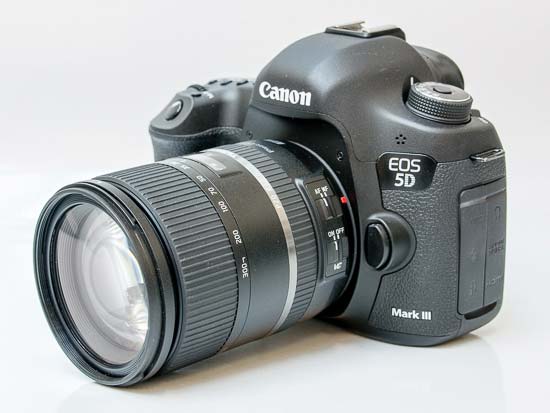 The Tamron 28-300mm f/3.5-6.3 Di VC PZD lens attached to the Canon EOS 5D Mark III
The Tamron 28-300mm f/3.5-6.3 Di VC PZD lens attached to the Canon EOS 5D Mark III
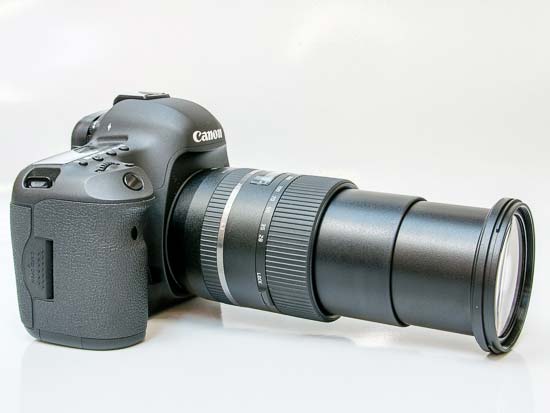 The Tamron 28-300mm f/3.5-6.3 Di VC PZD zoomed out
The Tamron 28-300mm f/3.5-6.3 Di VC PZD zoomed out
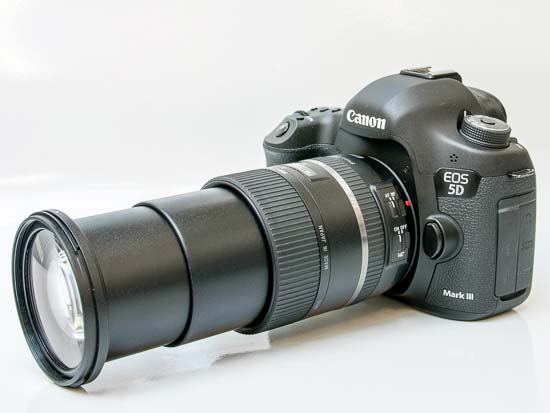 The Tamron 28-300mm f/3.5-6.3 Di VC PZD zoomed out
The Tamron 28-300mm f/3.5-6.3 Di VC PZD zoomed out
 The Tamron 28-300mm f/3.5-6.3 Di VC PZD lens attached to the Canon EOS 5D Mark III
The Tamron 28-300mm f/3.5-6.3 Di VC PZD lens attached to the Canon EOS 5D Mark III
There's a distance scale that runs from the closest distance of 49cm to infinity, but no depth of field scale. The rear element is surrounded by a metal lens mount and hides 19 elements in 15 groups. That's a lot of glass for the light to go through and is under continuous threat of dispersion. There are seven aperture blades for the aperture range which has a minimum of f/22-f/40.
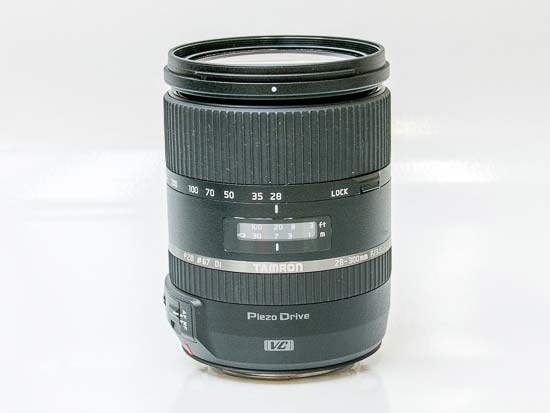 The Tamron 28-300mm f/3.5-6.3 Di VC PZD lens at 28mm
The Tamron 28-300mm f/3.5-6.3 Di VC PZD lens at 28mm
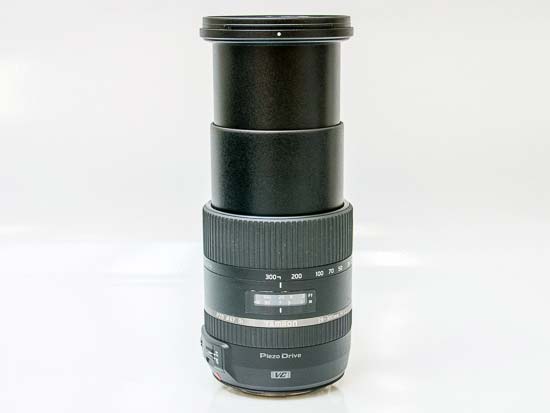 The Tamron 28-300mm f/3.5-6.3 Di VC PZD lens at 300mm
The Tamron 28-300mm f/3.5-6.3 Di VC PZD lens at 300mm
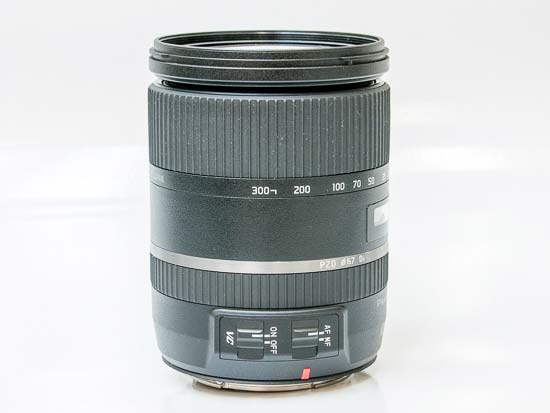 The side of the Tamron 28-300mm f/3.5-6.3 Di VC PZD lens
The side of the Tamron 28-300mm f/3.5-6.3 Di VC PZD lens
Located on the Tamron 28-300mm f/3.5-6.3 Di VC PZD lens are three switches. The first is a simple lock to keep the lens at 28mm by placing the switch into a carved divot in the barrel.
The other two switches are to toggle the AF/MF and VC on/off. The AF/MF switch on the side of the lens makes it easy to switch between the two focusing systems.
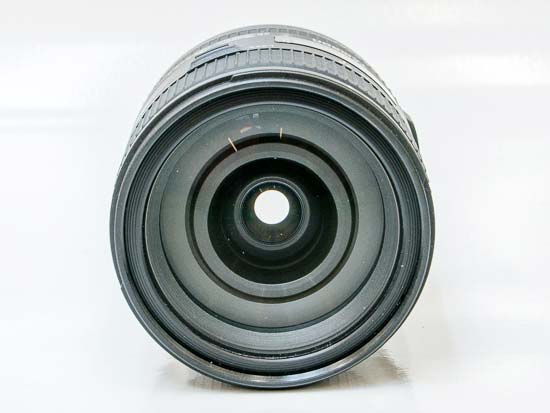 The front of the Tamron 28-300mm f/3.5-6.3 Di VC PZD
The front of the Tamron 28-300mm f/3.5-6.3 Di VC PZD
 The rear of the Tamron 28-300mm f/3.5-6.3 Di VC PZD
The rear of the Tamron 28-300mm f/3.5-6.3 Di VC PZD
Vibration Compensation is Tamron's version of an image stabiliser. This is a big selling point for the Tamron 28-300mm f/3.5-6.3 Di VC PZD, as neither the Canon or Nikon equivalents offer image stabilisation.
In practice we found it offered around 3 f-stops of compensation, obviously dependant upon your own particular hand-holding technique, making it easier to use the lens in low-light. It's an active type that will visibly steady the shot in the lens for you to see. It does that for around a second after you've locked focus before resetting. Tamron claim that their VC system is lighter and smaller thanks to a complete reversal in how the system operates. Usually IS uses magnets attached to the IS lens element with electromagnetic coils. The latest system is attached directly to the lens element instead.
 The side of the Tamron 28-300mm f/3.5-6.3 Di VC PZD
The side of the Tamron 28-300mm f/3.5-6.3 Di VC PZD
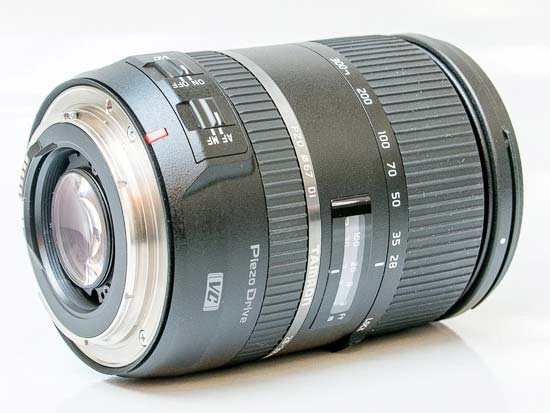 The side of the Tamron 28-300mm f/3.5-6.3 Di VC PZD
The side of the Tamron 28-300mm f/3.5-6.3 Di VC PZD
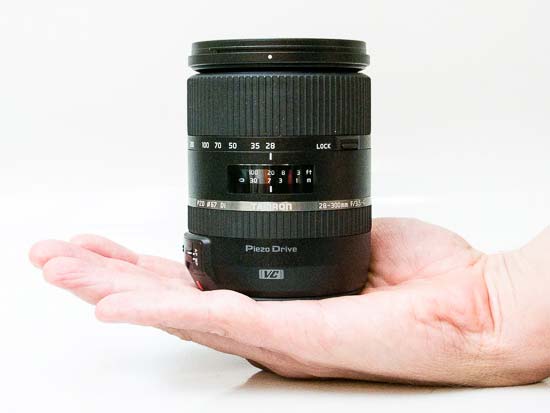 The Tamron 28-300mm f/3.5-6.3 Di VC PZD in-hand
The Tamron 28-300mm f/3.5-6.3 Di VC PZD in-hand
 The Tamron 28-300mm f/3.5-6.3 Di VC PZD with the supplied lens hood fitted
The Tamron 28-300mm f/3.5-6.3 Di VC PZD with the supplied lens hood fitted
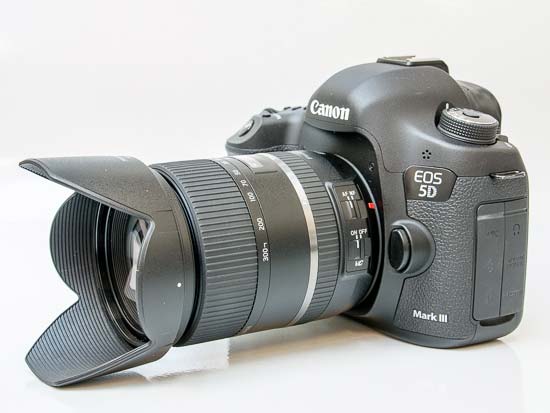 The Tamron 28-300mm f/3.5-6.3 Di VC PZD with the supplied lens hood fitted
The Tamron 28-300mm f/3.5-6.3 Di VC PZD with the supplied lens hood fitted
The lens is supplied with lens caps and a petal-shaped lens hood - there's no bag included. The filter size is 67mm.
Focal Range
The focal range of the Tamron 28-300mm f/3.5-6.3 Di VC PZD is extremely broad. It's possible to encompass a large amount of photographic styles when using a lens such as this.
At 28mm, the field of view is 75°23'.
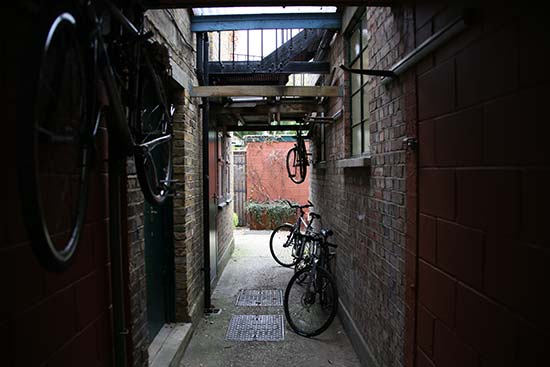 Field of view at 28mm
Field of view at 28mm
At the 300mm end, the field of view is 8°15'.
 Field of view at 300mm
Field of view at 300mm
Auto-focusing
The Tamron 28-300mm f/3.5-6.3 Di VC PZD features a form of ultra-sonic motor. It incorporates a Piezoelectric motor that uses an electric charge to rotate the tip by producing an ultrasonic vibration. This in turn adjusts the rotor using friction. This type of ultrasonic focusing is distinctly smaller than other varieties meaning that there's less space being used. Focusing is certainly silent and precise but we didn't think it was as fast as a Canon USM lens. Importantly, this solution allows instant manual override even when the focus mode switch is in the AF position.
Chromatic Aberrations
The Tamron 28-300mm f/3.5-6.3 Di VC PZD does suffer from chromatic aberrations, more so at the edges of the frame when shooting wide-angle.
 |
 |
Vignetting and Distortion
With the Tamron 28-300mm f/3.5-6.3 Di VC PZD wide open, you can see some very noticeable light fall-off in the corners throughout the zoom range. Stopping down helps, although to completely get rid of this phenomenon, you will need to use an f-stop of f/8 or smaller. There's also some very obvious barrel distortion at the 28mm setting.
 Vignetting at 28mm
Vignetting at 28mm
 Vignetting at 300mm
Vignetting at 300mm
Macro
The Tamron 28-300mm f/3.5-6.3 Di VC PZD has a closest focusing distance of 49cm and a maximum magnification ratio of 1:3.5 at 300mm focal length.
 Close-up performance
Close-up performance
Bokeh
Bokeh is a word used for the out-of-focus areas of a photograph, and is usually described in qualitative terms, such as smooth / creamy / harsh etc. In the AF 28-300mm f/3.5-6.3 Di VC PZD lens, Tamron have employed an iris diaphragm with seven rounded blades, which has resulted in nice bokeh in our view. We do realise, however, that bokeh evaluation is subjective, so we've included some 100% crops for your perusal.
 |
 |
 |
 |
Sharpness
In order to show you how sharp this lens is, we are providing 100% crops on the following pages.
